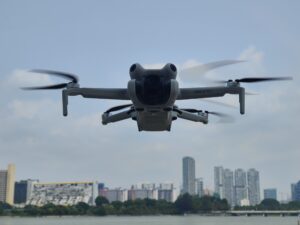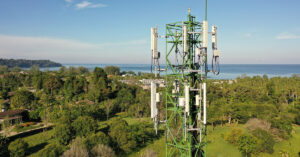Cisco has launched an environmental sustainability strategy, called Plan for Possible, which involves three priorities and will affect how it operates its business and engage with suppliers, customers and communities.
The goal is to go beyond the “doing no harm” approach and instead build a strategy towards environmental sustainability — a move that is in line with what IT organisations in the region believe in.
An IDC report found that 62 per cent of companies in the Asia-Pacific believe investments in IT are very or extremely important to reach sustainability goals, said Mary de Wysocki, Cisco’s chief sustainability officer.
“Technology can help us rethink operating and business models in ways that are digital and low carbon, but also improve individual wellbeing and create opportunities for communities,” she said.
In the first priority to accelerate the transition to clean energy and decarbonisation, Cisco’s vision is to modernise power grids to connect decentralised sources of clean energy. As part of this priority, Cisco has set a goal of reaching Net Zero across its value chain by 2040, including the energy use of its suppliers and customers.
As part of this priority, Cisco has developed products with better power consumption and improved performance, such as the Silicon One chip, Cisco’s networking device for AI processing, which reduces energy consumption while increasing bandwidth, and Universal Power Over Ethernet (PoE) to optimise energy use for smart buildings. Cisco is also helping its supply chain set greenhouse gas (GHG) reduction targets.
Under the second priority of evolving to a circular business model, Cisco aims to extend the useful life of its products and provide ongoing services. By 2025, the company expects to have incorporated circular design principles into all of its new goods and packaging.
It has also established programmes to promote circularity in its value chain: The Cisco Takeback and Reuse Program (customers can return end-of-life technology at no cost), Green Pay (a circular IT payment solution, and Cisco also recovers items to reuse or repurpose), and Cisco Refresh (remanufacturing of gadgets).
Finally, Cisco is prioritising investing in resilient ecosystems and regenerative solutions to adapt to climate realities. In 2021, the company committed US$100 million over 10 years to climate solutions, reducing carbon emissions and restoring ecosystems.
An example of how technology can help to build sustainability into a business is the Bangalore airport, which supports 50 million passengers annually, said Vish Iyer, vice president of Architectures at Cisco.
The airport converged five parallel networks for airport operations, airlines, security systems, power and ethernet, and PA systems, into one infrastructure with five virtual instances of various technologies. This has resulted in the elimination of more than 50,000 metric tons of carbon emissions.
The airport also uses facial recognition technology for check-in, eliminating the need for boarding passes and reducing check-in times by 10 minutes. In addition, connecting the operating systems has resulted in a quick turnaround time of the aircraft to runways, saving three to five minutes per aircraft.
Organisations in the Asean region have also embraced the importance of environmental sustainability, said Bee Kheng Tay, president of Cisco Asean.
“Sustainability has become a top priority on many Asean government’s agendas, such as the launch of the Singapore Green Plan 2030, Singapore’s whole-of-nation sustainability movement which has set bold targets across areas like greener infrastructure and buildings and making sustainability a new engine for jobs and growth,” she said.






